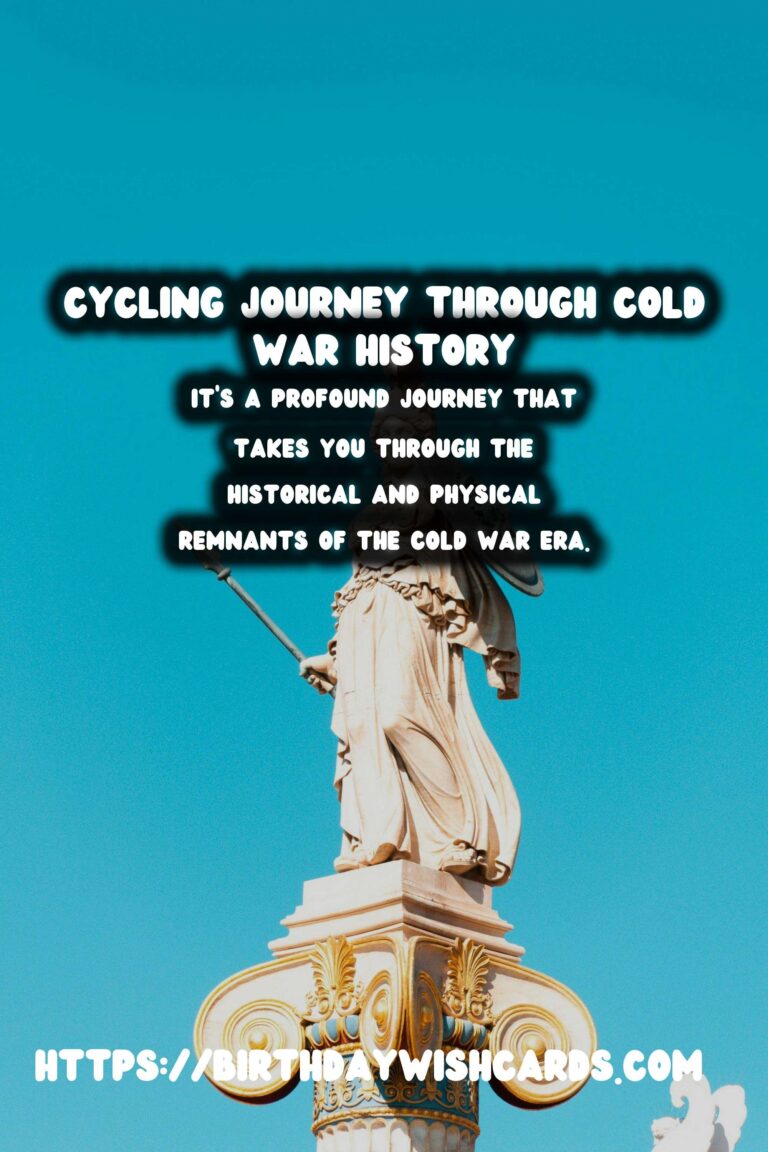
The Iron Curtain Trail is not just a cycling route. It’s a profound journey that takes you through the historical and physical remnants of the Cold War era, following the path where East met West for nearly five decades.
What is the Iron Curtain Trail?
Stretching approximately 10,400 kilometers from the Barents Sea to the Black Sea, the Iron Curtain Trail is a designated long-distance cycling route that passes through 20 different countries. It aligns with the historical division of Eastern and Western Europe, giving travelers a unique perspective of the Cold War’s legacy.
The trail was established to preserve the memory of the Cold War and to promote sustainable tourism. It’s a journey not only through rolling hills and scenic landscapes but also through museums, monuments, and memorials that mark the important events of the 20th century.
Cycling the Trail: What to Expect
As you embark on this journey, you’ll experience diverse terrains ranging from rugged coastlines to picturesque countryside, quaint villages to vibrant cities. The route offers cyclists a chance to encounter a variety of cultures and histories interwoven along the Iron Curtain’s path.
The route is well marked and can be adapted to suit different skill levels. Whether you’re an advanced cyclist or a history enthusiast looking for a more leisurely pace, there’s a segment of this trail that will meet your needs.
Highlights Along the Way
Among the trail’s many highlights are sections that override the former border installations, now designated as greenbelt zones. These areas are teeming with biodiversity, flourishing amidst the solitude that once symbolized separation.
In Germany, visit the Harz National Park or the Elbe Sandstone Mountains. Both offer stunning natural views and a peek into the region’s historical significance.
The trail also takes you through major cities like Berlin—hosting several iconic Cold War sites, including the Berlin Wall Memorial and Checkpoint Charlie. In Hungary, Budapest’s House of Terror Museum details the country’s harrowing history under communist rule.
The Historical Significance
The Iron Curtain was more than just a physical barrier; it symbolized the ideological division between communism and capitalism. Following the end of World War II, the boundary effectively cut off Eastern Europe, allowing the Soviet Union to exert its influence over the region.
The Iron Curtain Trail offers an opportunity to reflect on this division, offering insight into not only the past conflicts but also the strategies that ensured peace and eventual reunification of Europe.
Preserving the Trail’s Legacy
The trail is protected and promoted by the European Green Belt, an initiative to conserve the ecological diversity and natural beauty of the former Iron Curtain’s path. This helps ensure that the trail remains not only a destination for history buffs but also for those looking to explore nature.
As more cyclers discover its unique blend of history, culture, and environment, the trail is helping foster a shared European identity.
Planning Your Journey
Before setting out, it’s important to plan ahead. Ensure you’re equipped with the right gear and have accommodation booked. Many of the regions along the trail are rich in local lodging and welcoming communities.
Maps and guides are available to help navigate the terrain and pinpoint crucial historical sites and pleasant detours.
Conclusion
A ride along the Iron Curtain Trail is a unique experience that blends adventure with historical education. It’s a reminder of how far we’ve come as a society and how the legacy of those divided times continues to shape our collective future.
By choosing to pedal through this historically significant landscape, cyclists not only enjoy beautiful vistas but also pay tribute to an era that defined the modern world.
The Iron Curtain Trail is not just a cycling route. It’s a profound journey that takes you through the historical and physical remnants of the Cold War era.
#IronCurtainTrail #CyclingHistory

